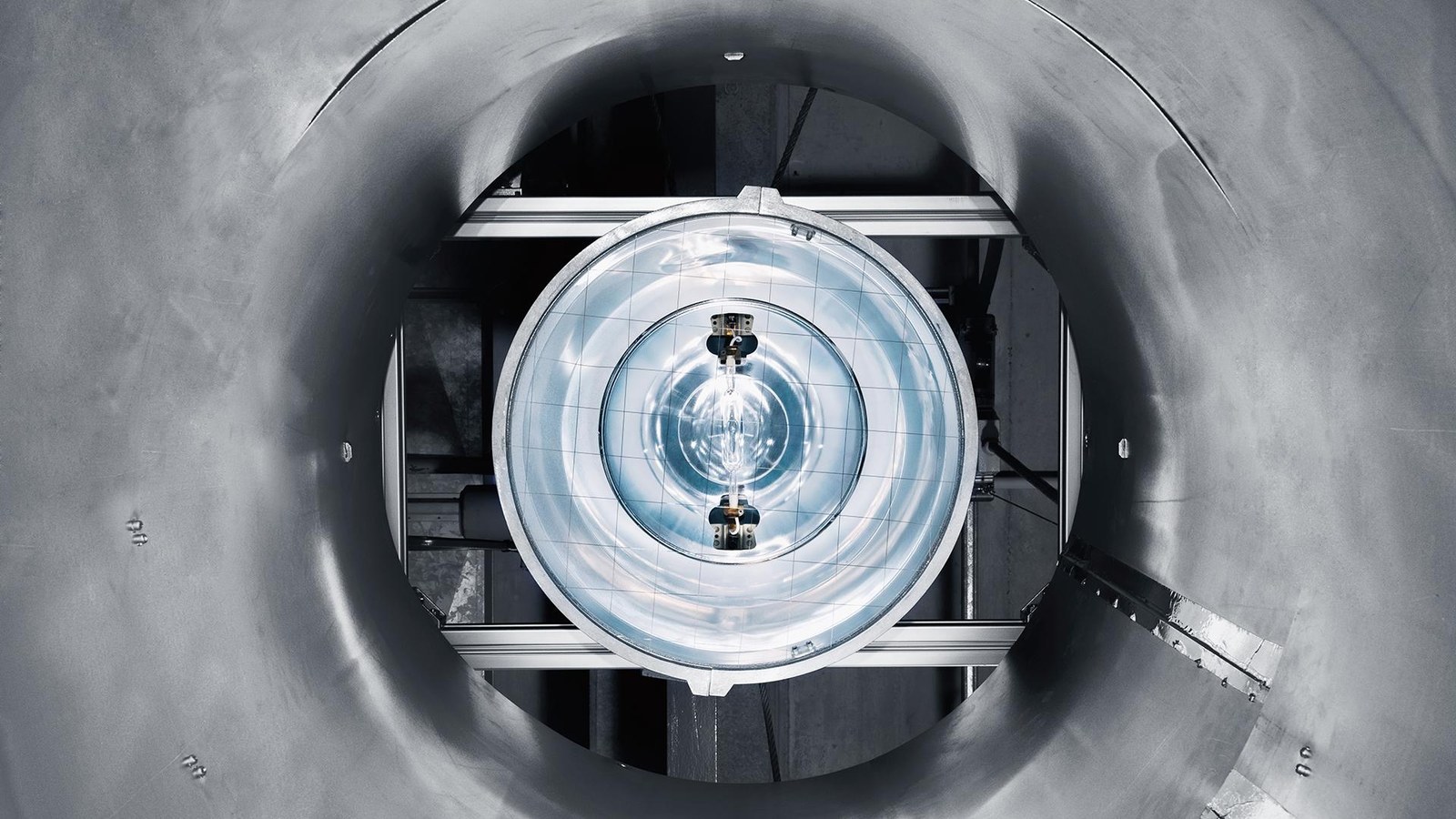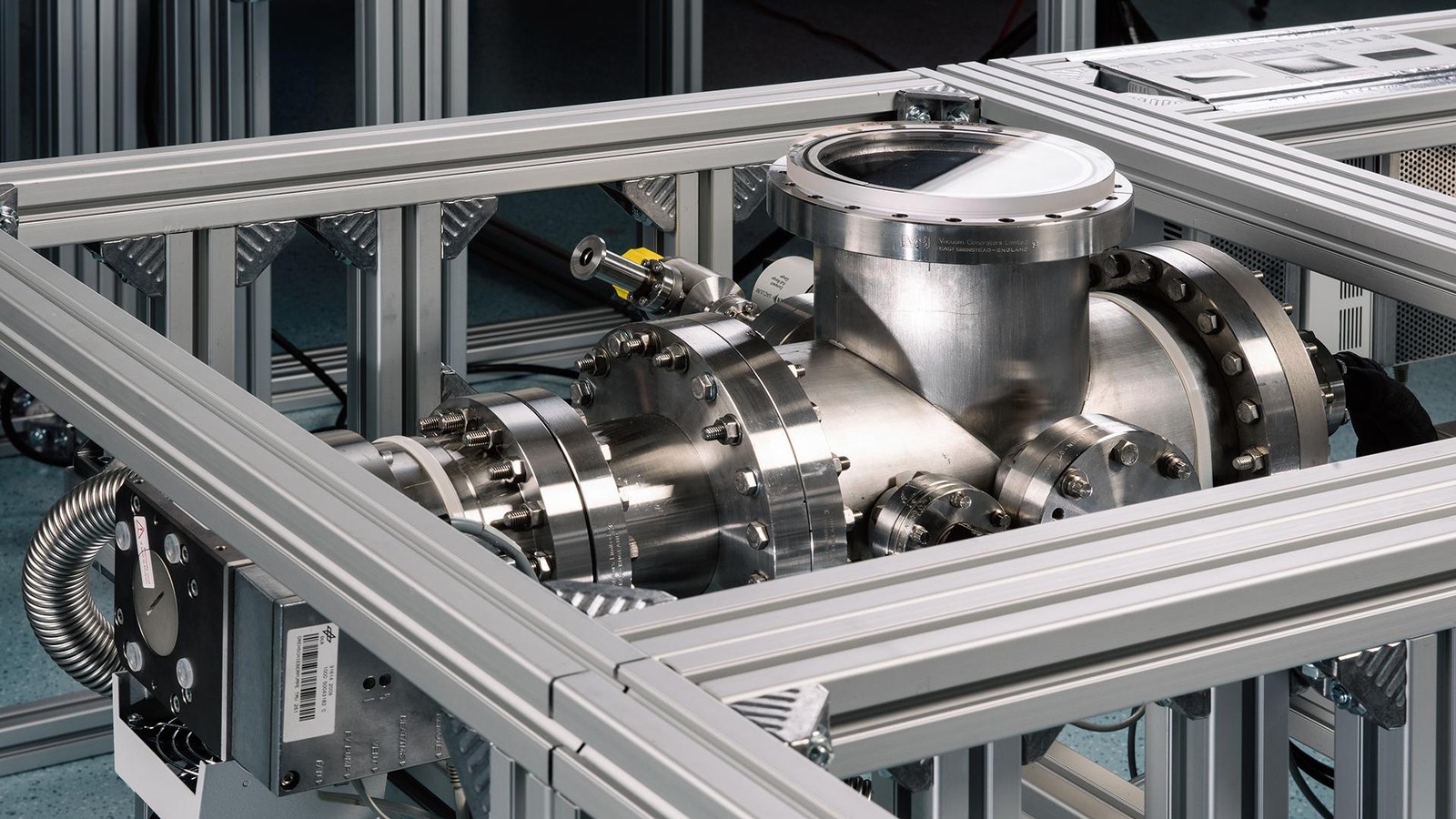Biophysical space simulation facility



Research conducted at the Astrobiology Space Simulation Facility of the Institute of Aerospace Medicine of the German Aerospace Center (Deutsches Zentrum für Luft- und Raumfahrt; DLR) in Cologne is expanding our knowledge about the limits of life on Earth. The research findings enable conclusions to be drawn about the possibility that life could exist – the habitability – of environments on other planets and moons, as well as the impact of a naturally changing or artificially altered environments on Earth.
In the approximately 93-square-metre simulation facility with associated biological laboratories, researchers are investigating whether and how terrestrial organisms, some from extreme regions on Earth, survive and reproduce in simulated extreme conditions representing those found in space, on other planets or in altered environmental conditions on Earth. This allows them to gain insights into life's origin, evolution and distribution on Earth and beyond. The analyses also serve as an experimental basis for international 'planetary protection' standards for protecting other planets and the icy moons of the outer solar system, such as ECSS standards. Astrobiological space missions are also prepared here and space hardware and materials are tested at the facility.
Limits and possibilities of terrestrial life in space
Earth is the only place in the Universe we know to be inhabited. Nevertheless, very extreme environmental conditions also exist in various places on Earth, which at first glance appear hostile to life: temperatures above the boiling point or far below the freezing point of water, extreme dryness, high salinity, high or low pressure, high or low pH values, oxidising chemical compounds, strong solar radiation or absolute darkness, increased radioactive radiation or a lack of oxygen. These extreme environments are similar in some parameters to the environmental conditions found on other celestial bodies and are therefore considered analogues. So far, living organisms, predominantly microorganisms, have been discovered in almost all these places. These extremophile organisms show us the natural diversity and adaptability of life to the environmental conditions on Earth, which are also constantly changing. In the space simulation facilities, researchers are investigating the extent to which organisms isolated from extreme regions on Earth additionally exhibit resistance to other extreme environmental factors and their combinations, including those that existed on early Earth or early Mars or exist today in space or on other celestial bodies. The molecular and cellular properties that lead to the respective adaptation are being investigated here.
The insights gained into the underlying mechanisms are also of great general importance for research on topics such as the effect and application of antimicrobial surfaces, the biological effect of ionising and short-wave ultraviolet radiation, the induction of cellular repair mechanisms and changes in microbial diversity in closed inhabited systems, such as the ISS and other habitats. The guiding principle of planetary protection is used to derive protective measures for exploration missions to planets and moons, such as NASA's Ocean Worlds Exploration Program.
Accompanying and complementing space missions
Not all environmental conditions can be reproduced in their full complexity in the astrobiological simulation facilities. Experiments must be conducted in space directly to explore the effects of the complex extraterrestrial radiation field and the entire solar radiation climate, including extremely short-wave ultraviolet radiation, on life. However, conducting successful experiments in space depends to a large extent on systematic pre-tests regarding the selection of organisms, chemical compounds and materials. The tests and ground experiments accompanying space missions are carried out in the space simulation facilities. They provide data complementary to the space experiments and enable additional analyses, as they allow for the investigation of a large number of samples under reproducible conditions in a simple and time-efficient manner.
